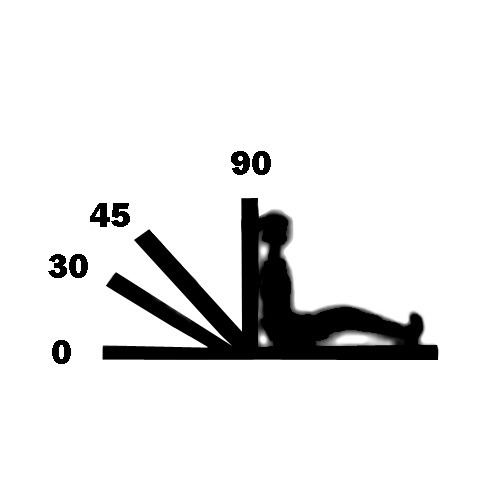 | ||
In medicine, Fowler's position is a standard patient position. It is an intervention used to promote oxygenation via maximum chest expansion and is implemented during events of respiratory distress. Fowler's position facilitates the relaxing of tension of the abdominal muscles, allowing for improved breathing. In immobile patients and infants, the Fowler's position alleviates compression of the chest that occurs due to gravity. Fowler's position increases comfort during eating and other activities, is used in postpartum women to improve uterine drainage, and in infants when signs of respiratory distress present. The patient is placed in a semi-upright sitting position (45-60 degrees) and may have knees either bent or straight. Fowler's position is also used when oral or nasal gastric feeding tubes have been implemented as it minimizes the risk of aspiration. Peristalsis and swallowing are aided by the effect of gravitational pull.
There are several types of Fowler's positions: Low, Semi, Standard, and High Fowler's. Low Fowler's position is when the head of bed is elevated 15-30 degrees, Semi-Fowler's position is 30-45 degrees, Standard Fowler's is 45-60 degrees, and High Fowler's position is 80-90 degrees.
It is named for George Ryerson Fowler.
